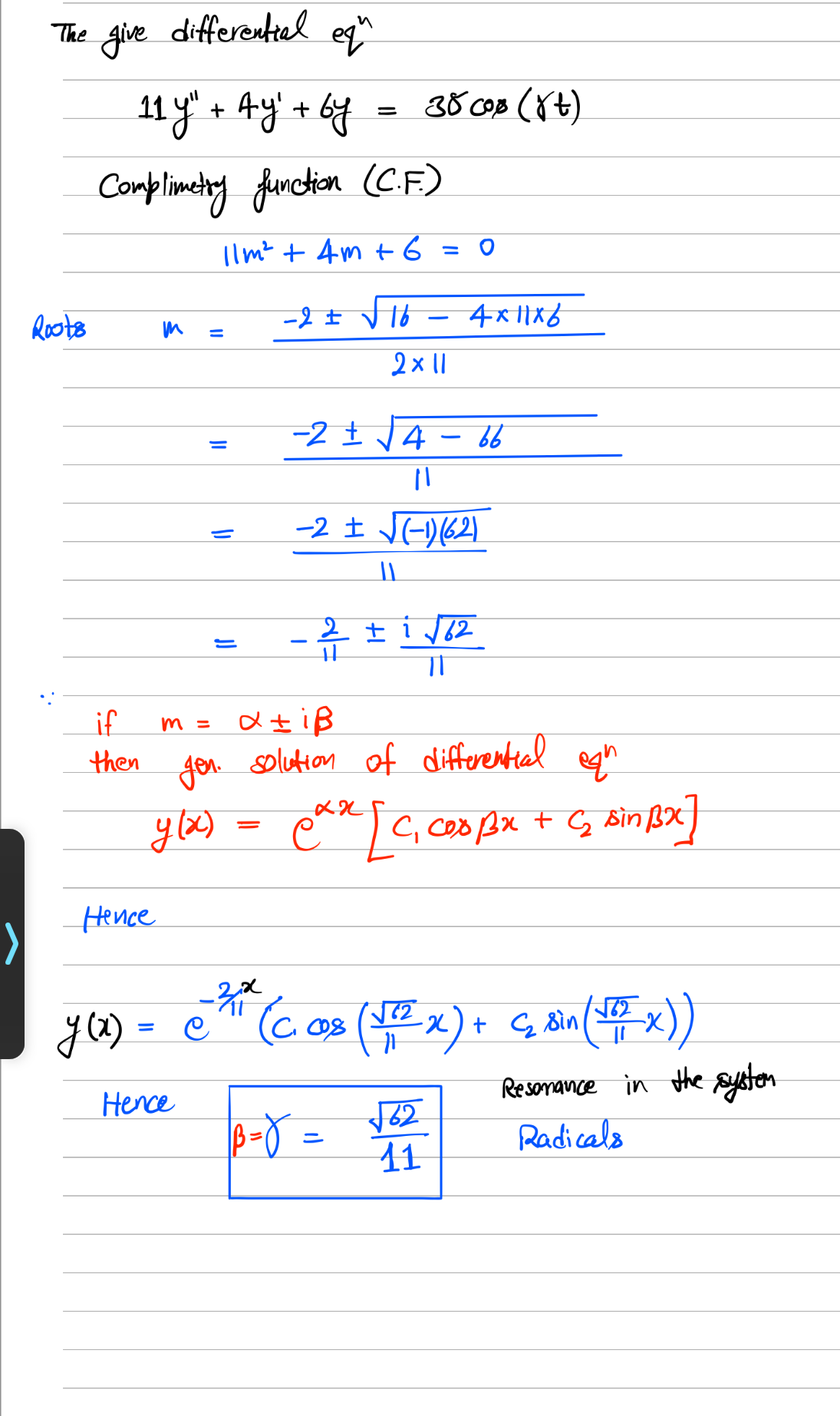The motion of a mass and spring is described by the following equation: 11y"+4y/+6y= 35 cos(yt) Identify the value of y that would produce resonance in the system. Give an exact value, but you don't need to simplify radicals. Y = What is the amplitude of the steady-state solution when the system is at resonance? Round your answer to two decimal places. The amplitude is If there was no external force, the oscillation of the spring could be described in the form A sin(ßt + p). What is the value of B? Give an exact value, but you don't need to simplify radicals.
The motion of a mass and spring is described by the following equation: 11y"+4y/+6y= 35 cos(yt) Identify the value of y that would produce resonance in the system. Give an exact value, but you don't need to simplify radicals. Y = What is the amplitude of the steady-state solution when the system is at resonance? Round your answer to two decimal places. The amplitude is If there was no external force, the oscillation of the spring could be described in the form A sin(ßt + p). What is the value of B? Give an exact value, but you don't need to simplify radicals.
Related questions
Question

Transcribed Image Text:The motion of a mass and spring is described by the following equation:
11y"+4y+6y= 35 cos(yt)
Identify the value of y that would produce resonance in the system. Give an exact value, but you don't
need to simplify radicals.
Y
What is the amplitude of the steady-state solution when the system is at resonance? Round your answer to
two decimal places.
The amplitude is
If there was no external force, the oscillation of the spring could be described in the form A sin(ßt + p).
What is the value of B? Give an exact value, but you don't need to simplify radicals.
В
Expert Solution
Step 1: Value of gamma

Step by step
Solved in 4 steps with 4 images
